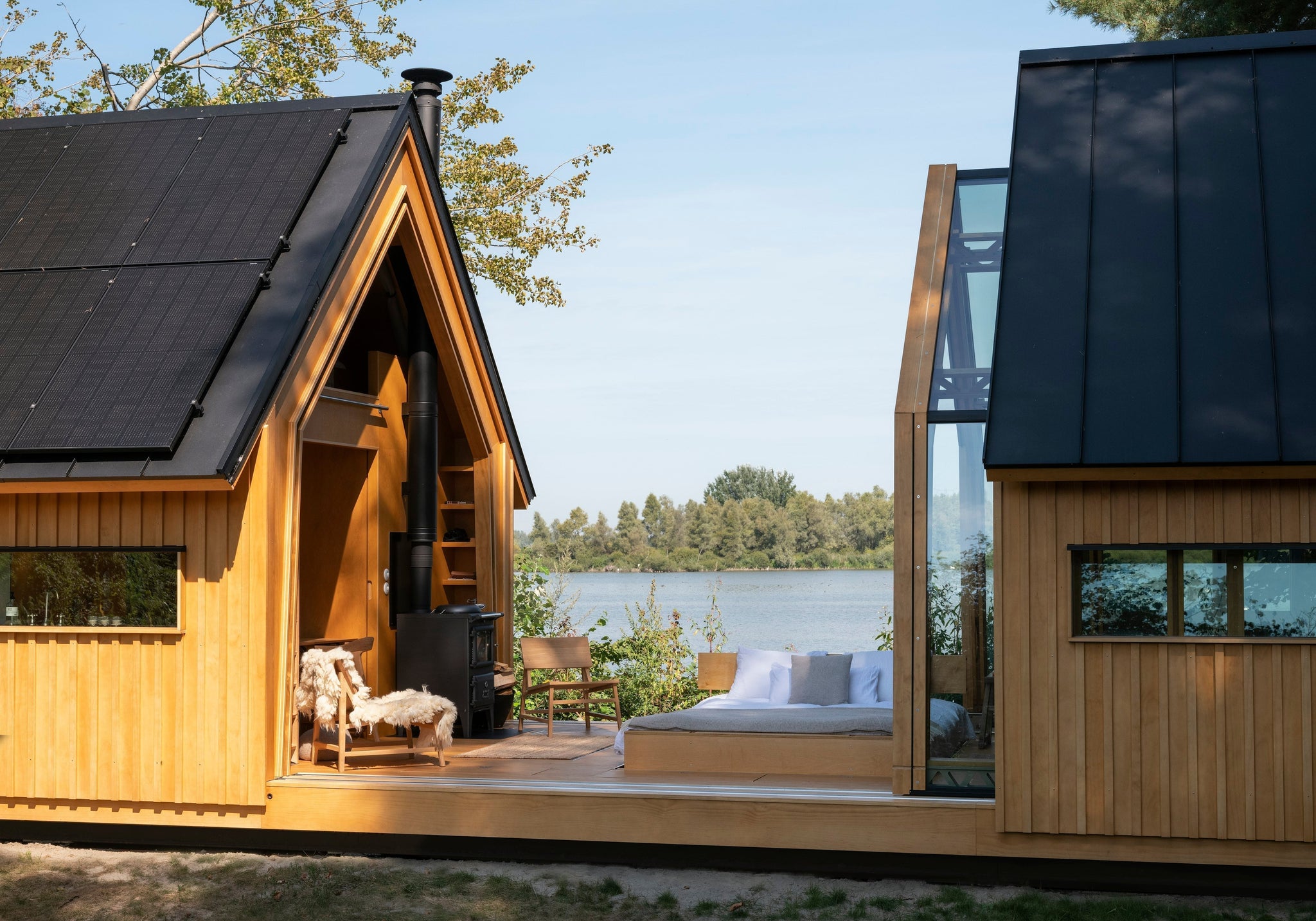
05/2020 Escape
The essence of surfing is a playful dance between two bodies of water: surfer and energized waveform. We align in speed and tempo and revel in the pursuit of the controlled slide, just as the ancients did. When we step onto dry land, we have nothing tangible to show for our efforts. Just a sparkly-eyed shimmer of delight. Many of us dive into riding waves as a light-hearted romp, a healing art, an exercise in humility, or a fluid exchange of the pulsing energy that animates every living thing. It is the gift of play in a spontaneous environment that shakes us out of our heads and back into the wisdom of our bodies. And we aren’t the only ones: fish, dolphins, penguins, seals, iguanas, and swans are also known to toy with wave energy with no apparent goal or intention.
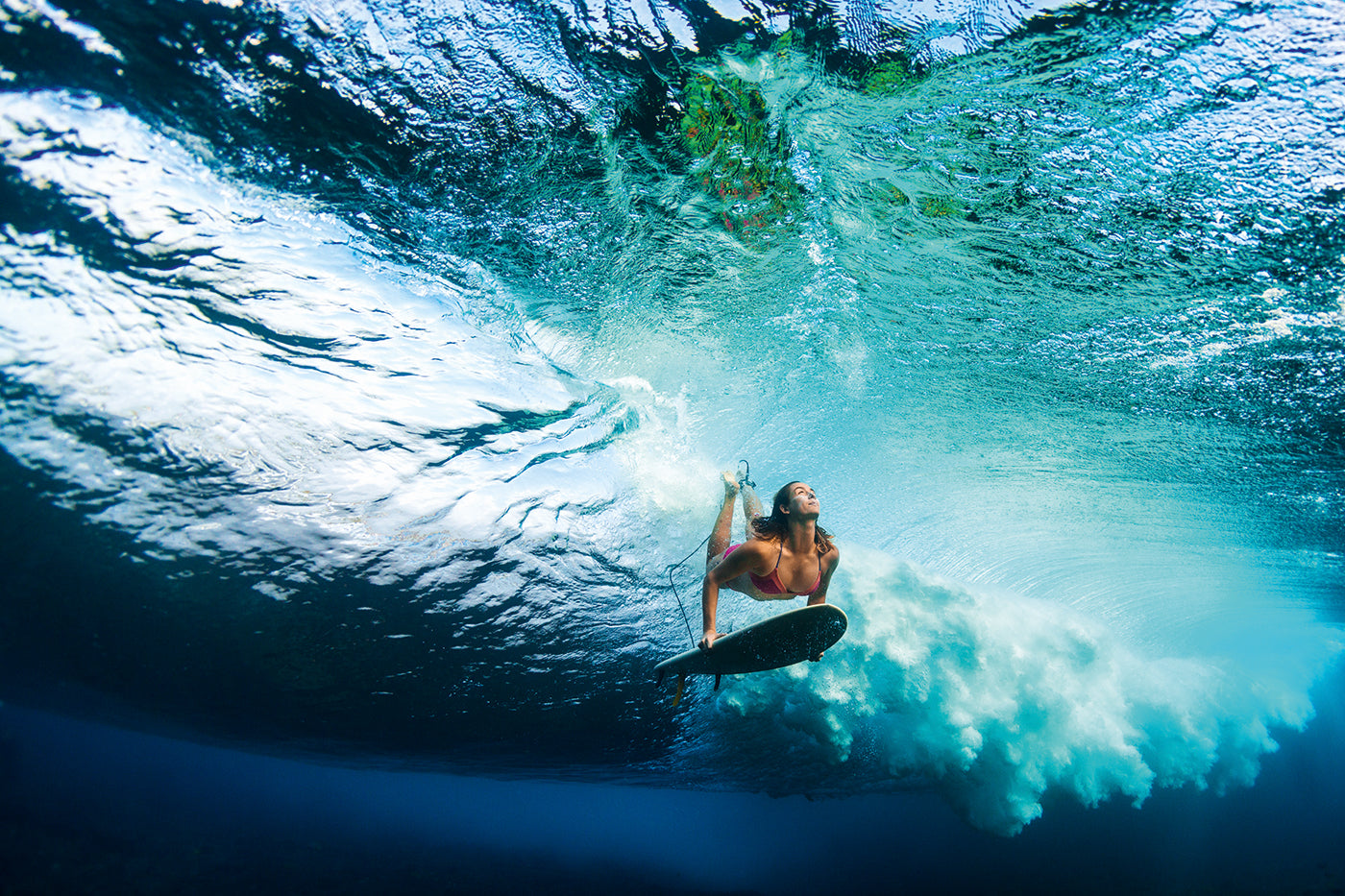
Professional coldwater surfer Anna Ehrgott from southern California. A graceful goofyfooter with a proclivity for pointbreaks, Anna is part of the modern incarnation of surfers open to riding all crafts. (Photo: Sarah Lee, She Surf)
Beyond the intimate experience of a singular surfer in the water, surfing has never been only about riding waves. How we play is saturated with the ideas and ideals of our world. From its earliest mass swelling in the fertile heart of Polynesia, the culture of surfing grew as a playful device for altering, informing, and reinforcing cultural values. Early surfing cultures adopted wave riding for its ability to create camaraderie and provide physical challenge, cultural cohesion, and experiential spirituality. The origins of surfing in Polynesia made clear that it was a cultural practice of deep and meaningful play—for everyone.
Media representations and endemic marketing sold the impression that surfing was only for white, heterosexual men... dilating the dialogues of mainstream surfing has been slower than many of us hoped
Right now, women are reclaiming our natural place in the global sport, art, and culture of surfing. While men’s performance and perspectives have tended to dominate surfing narratives, the last three decades have seen women’s participation increase exponentially. Women now make up between 20 to 30 percent of surfers, and that number continues to grow. As girls are given the opportunity and support to engage with the sport, and as accessibility to boards and beaches increases, we will make up for lost decades in getting back to surfing’s legacy of inclusivity. As we work to catch up—not to men’s surfing—but to what our own minds, hearts, and bodies are capable of and long for in the water, we are witnessing the depth and diversity of a truly global women’s surf culture.
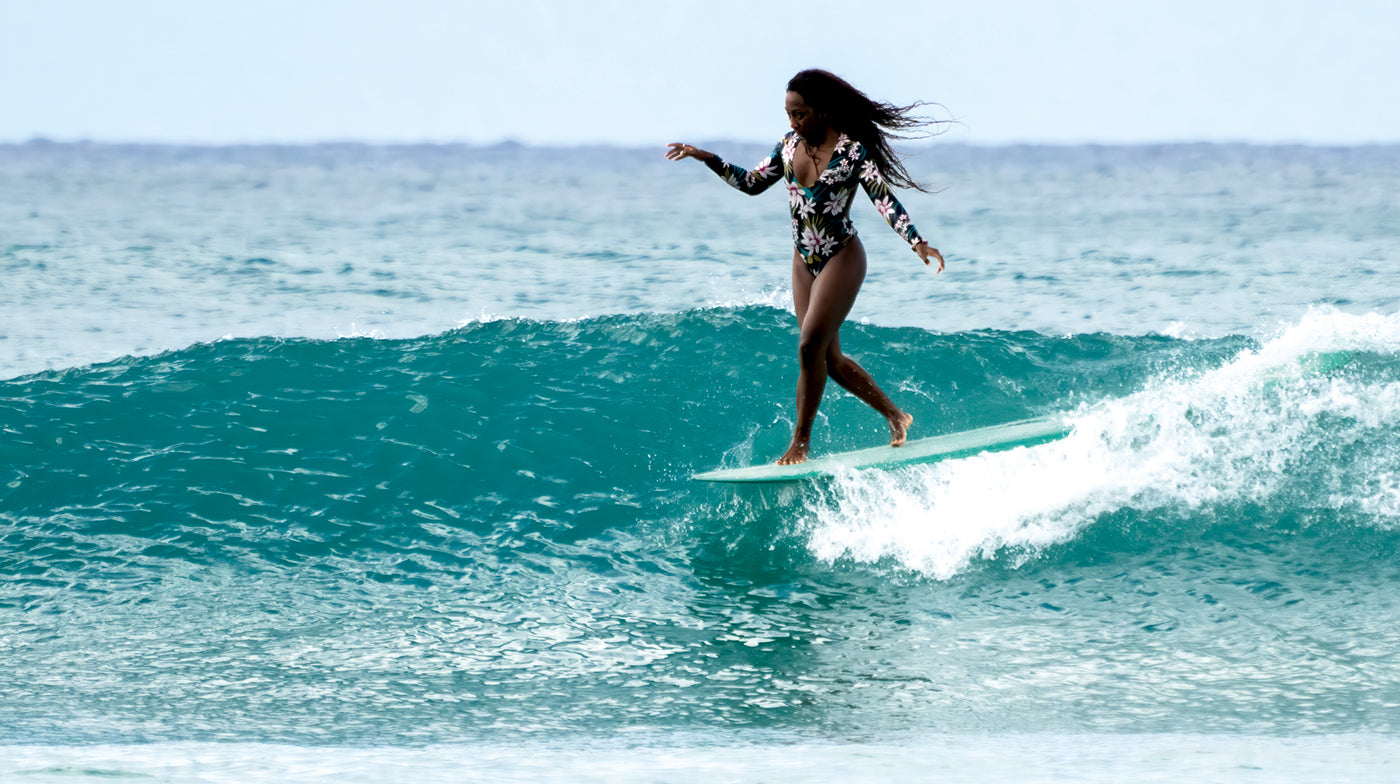
Mexican American professional surfer Dominique “Nique” Miller is smashing stereotypes out of the park and is consistently considered one of the best female surfers in the world. Long, clean lines with feet planted in the present, and eyes intently focused on the future. (Photo: Darin Miyashiro, She Surf)
The modern sport of surfing was pioneered primarily by young men and the culture has subsequently given priority to their perspectives, approaches, and accomplishments. Surf equipment, performance ideals, brands, media, and jargon have largely been based on the assumption of a homogenous surfing population. Media representations and endemic marketing sold the impression that surfing was only for white, heterosexual men. The progress of dilating the dialogues of mainstream surfing has been slower than many of us hoped.
Despite the positive impact of surfing in many regards, its dominant narratives have also presented some challenges: the comparison between men and women, the objectification of the latter, and the disregard for the preservation of the natural world and the cultural differences that define it. Most conversations about male and female surfing revolve around comparison, the thief of joy. These conversations are neither interesting nor productive. What’s the point in comparing the acrobatic height of a male ballet dancer’s leap to the astounding flexibility of a ballerina’s hyperextended splits? They are both to be celebrated independently and as parts of a whole spectrum of possibility for the human form. Both are beautiful, accentuated by their difference.

Lauren L. Hill practicing ease and flow in her homewaters off of Anastasia Island, Florida. Alongside surfing, she is also a writer who has spent the past decade exploring new waves and documenting burgeoning surf cultures around the world through an eco-feminist lens. (Photo: Haley McBride, She Surf)
“Uniformity is not nature’s way, diversity is nature’s way,” said celebrated activist and scholar Vandana Shiva. Healthy ecology demands diversity, as does a healthy culture. Surfing culture over the last century has mirrored dominant Western narratives of objectifying both women and the natural world, and it has contributed to the erasure of indigenous ways of knowing and coexisting with the planet. As traveling surfers, we are known to rename breaks, ignore local customs, and leave our disposables for locals to sort out.
I’ve dedicated the majority of the last 20 years to making a surfing life, as a professional surfer, writer, and filmmaker. My first surf contest was an event called Sisters of the Sea in North Florida. I did well enough, but it was the spirit of sisterhood amidst such a wild space that really spoke to me.
They are also rewriting the rules of femininity and womanhood, a byproduct of pursuing their passion for slip-sliding across a watery wave face
As a professional free surfer, I’ve made it my job to bring women’s stories to the attention of the media, while documenting budding surf cultures and chasing waves along the way. In almost every location, from remote islands in the South Pacific to well-trafficked beaches of the Mediterranean, I met women surfing. I witnessed them deeply engaged in their communities, in service of their own pleasures, and dedicated to the protection of the places they visit and where they belong. This intimate and inherent ecological responsibility was a recurring theme. At home in the United States and Australia, I noticed that women made up the majority of environmental and community groups, too. Generally speaking, women seemed to approach surfing with different goals and ideals and seemed charged with a sense of protection for their spaces of play more than men appeared to.
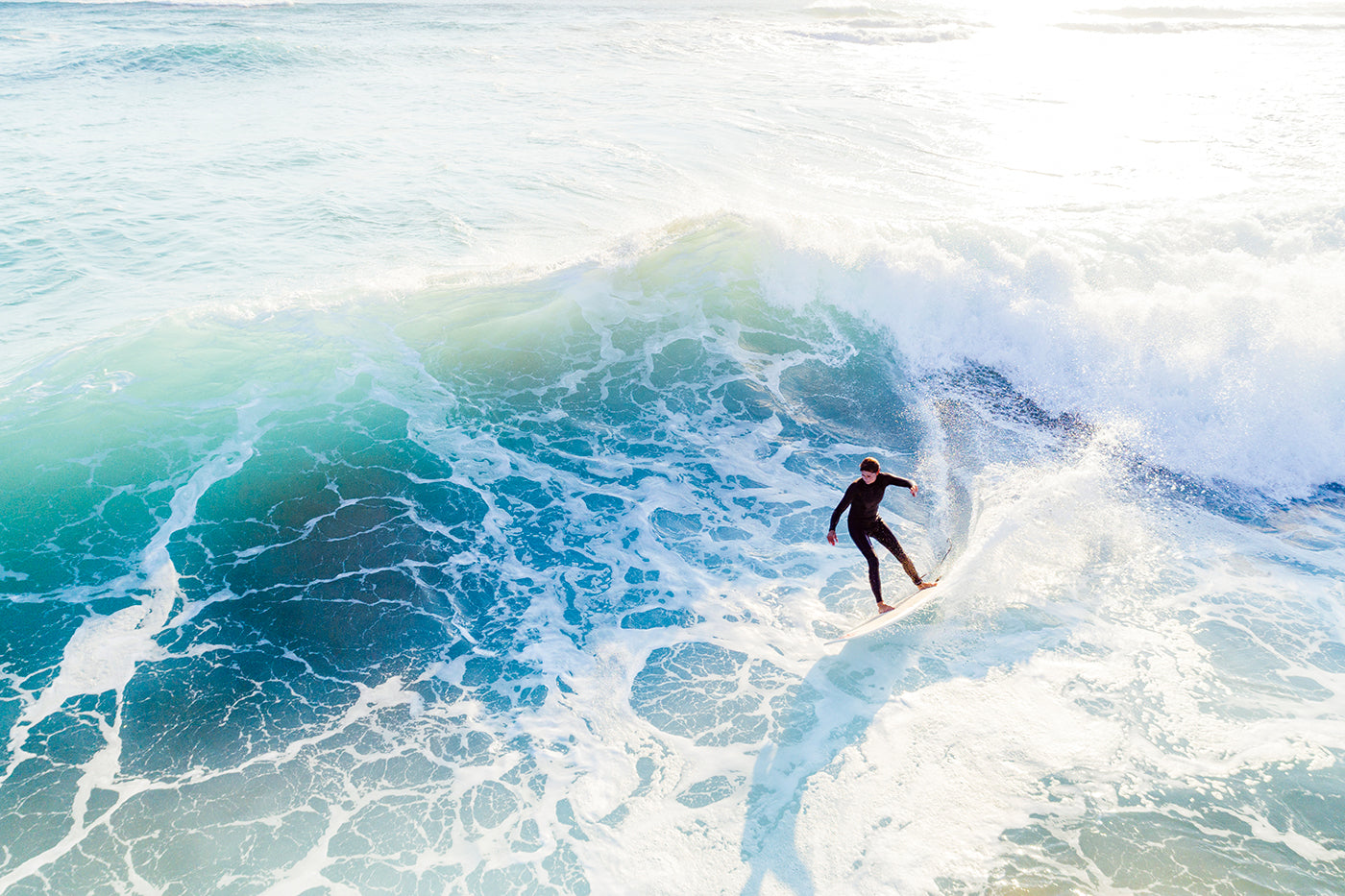
Australian surfer Belinda Baggs is a longboarding icon who committed her life and livelihood to climate activism and motherhood. Belinda’s feature roles in films like Sprout, Dear & Yonder and The Heart & The Sea, combined with her 13-plus years as one of Patagonia’s main waterwomen, have solidified her place as one of the greats of our era. (Photo: Jarrah Lynch, She Surf)
In 2019, surfing became one of the first global sports to provide equal pay for women and men at the elite competitive level. While competitive women like Stephanie Gilmore and young phenoms like Caroline Marks are globally visible ‘womanifestations’ of the potential for women’s sport in cultures of economic privilege, radical change is also bubbling up from the fields and streets of emerging surf cultures around the globe: India, Sri Lanka, Iran, Morocco, Brazil, Gaza, and more. Women in these countries are not only shaping their local communities and cultures, but they are also rewriting the rules of femininity and womanhood, a byproduct of pursuing their passion for slip-sliding across a watery wave face. Looking forward, regionally adapted surfing cultures, guided by fresh perspectives—those of women, indigenous people, and people of color—might reshape the impact of surfing on beaches and communities.
Our book is a celebration of surfers stretching the bounds of performance, art, design, culture, activism, and adventure—right now. They represent the pillars on which new, exciting, and engaged surfing cultures will be constructed, rooted in egalitarianism, inclusivity, and honoring the connection with the planet ocean.
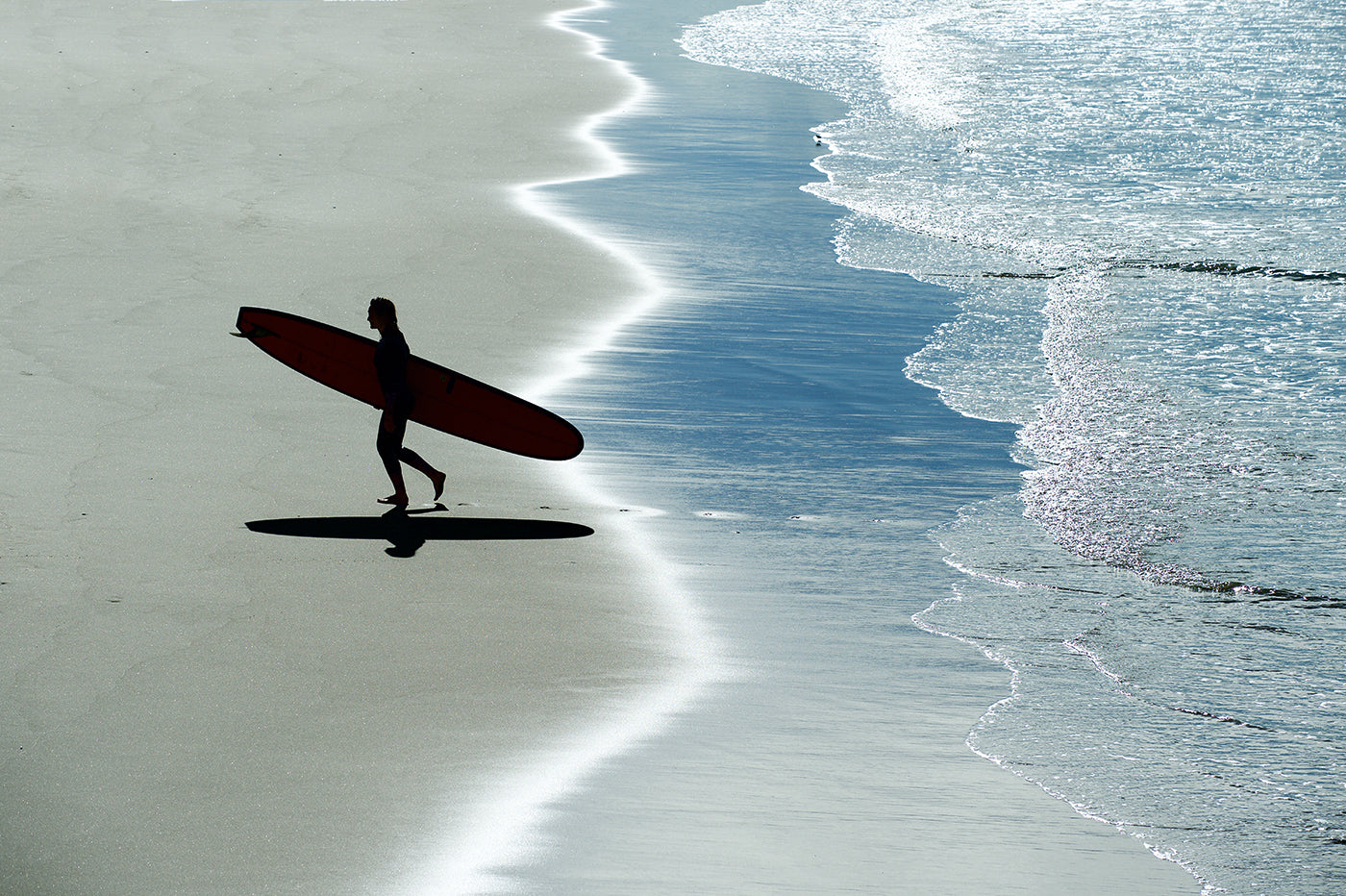
As surfers, we dwell in the dynamic, abundant, and fluid space where the ocean meets the land. (Photo: Morgan Maassen, She Surf)
But redefining women’s surfing is not only about recognizing the skill of modern surfers. When we lose a sense of our history, we end up making the same mistakes over and again, like using sex to sell women’s surfing, which ultimately undermines it. We’ve included several historical features to explore and honor some of those who came before us and paved our way. With history intact, we create the generative grounds of belonging that allow for evolving into wiser, healthier people, and communities. While this book is in no way comprehensive—there are too many outstanding water women to contain in one volume—our goal through She Surf was always to show and tell women and girls everywhere that surfing is theirs, too.
In a world increasingly swept by the inhuman pace of technology and guided by principles that lead us toward the destruction of our life-giving planet, at its very best surfing may be a humble outlet for remembering a different way. For many of us, riding waves has been a portal back home; home in our bodies and the larger bodies of water that give us joy.
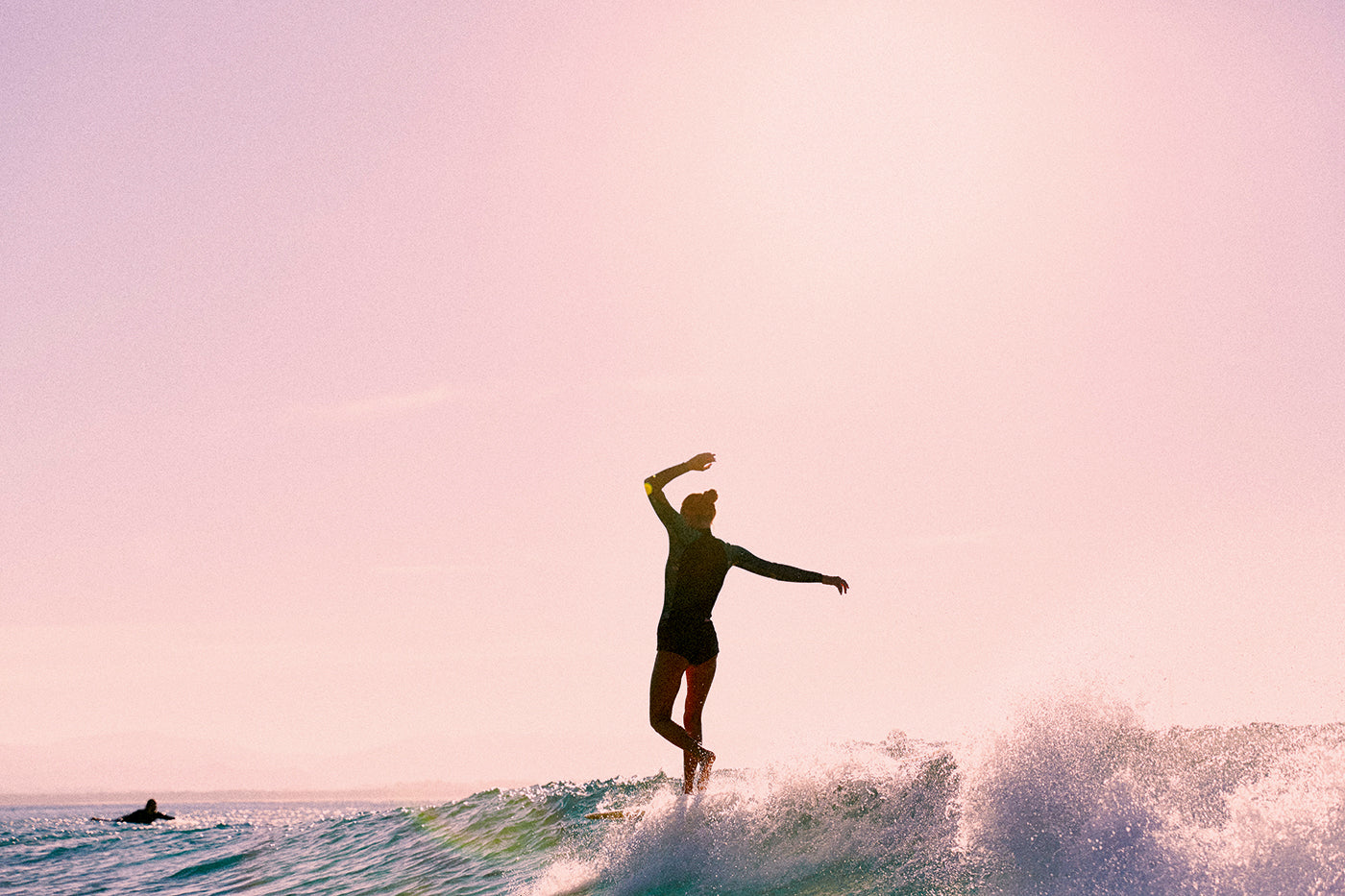
Crystal Thornburg-Homcy is a filmmaker, organic farmer, and an accomplished water woman with national and Olympic aquatic achievements. Crystal is no stranger to heavier water, which she approaches with giddy excitement. (Photo: Miles O’Sullivan, She Surf)
Surfing invites us to fall in love with the magic of liquefied energy waves that begin as distant winds and deliver us into the heart-bursting beauty of being alive in this inimitable point in time. To fully embody these moments is to allow space for wholeness, healing, connection, strength, and creativity. It is to allow fissures in old paradigms of division and separation. It is to invite new stories.
The Hawaiian word for surf, nalu, also translates as “to investigate, to search after truth and the origin of things.” These ancient, alternative meanings speak to the deceptive simplicity of surfing. They remind us that fundamental to the very definition of “surfer” is the quest to commune with and share the silly, spacious, profound, humbling personal truths of aspiring to dance by ocean rhythms.
Celebrate the diverse, vibrant, and engaged community of female riders making waves through She Surf.












